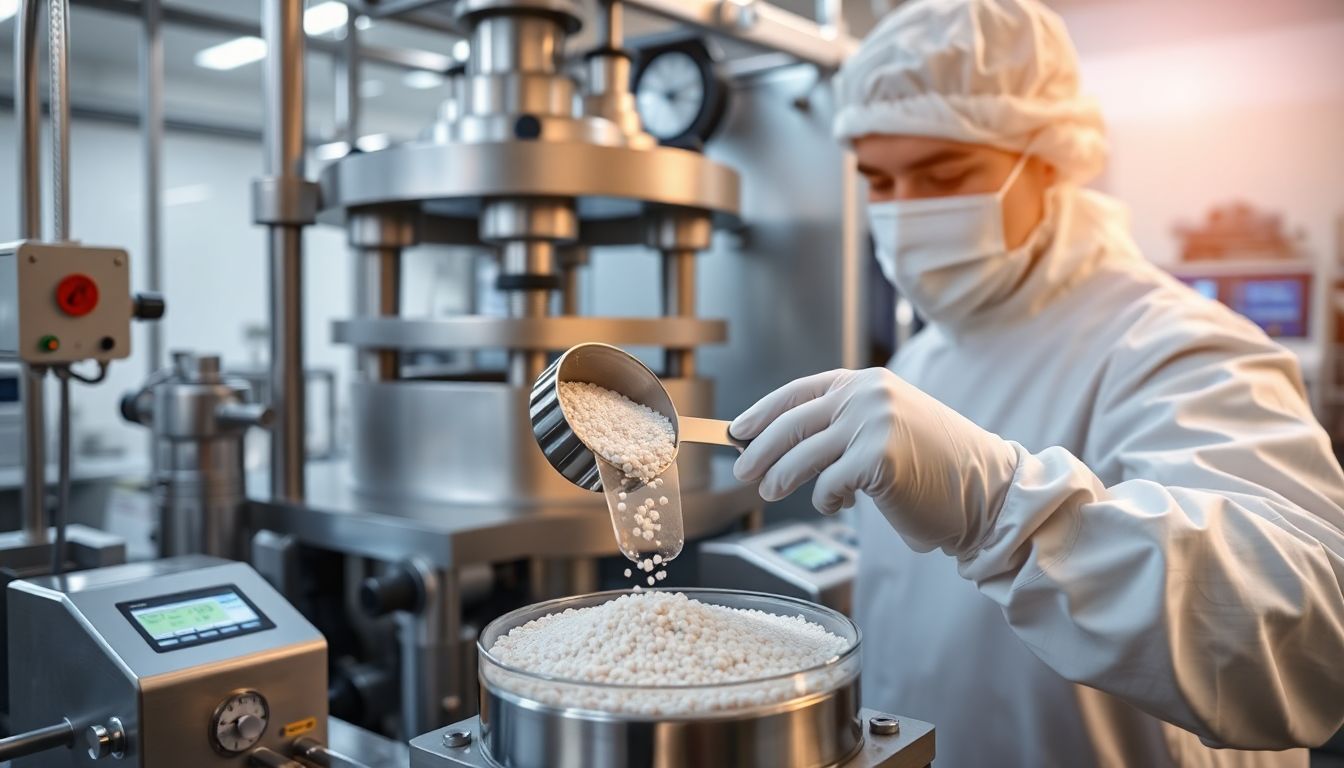Explore Pharmaceutical Formulation Companies in India – Medicef Pharma Insights
Explore leading pharmaceutical formulation companies in India through Medicef Pharma Insights. Stay informed and elevate your understanding of the market.

The world of medicine and supplements is growing fast. People want high-quality tablets that work well and last long. This means manufacturers need to focus on how they compress granules into tablets. Proper compression makes sure the tablets stay together, dissolve correctly, and stay stable over time. In this guide, you'll learn everything from preparing granules to using the right equipment and keeping quality high.
Granules are small, solid particles made from powders. Think of them like little rocks, but in a fine size. They form when powders stick together. In tablet making, they help create strong, evenly shaped tablets. Simply put, granules are like building blocks, helping the tablet stay intact.
The success of tablet compression depends on granules' features. Particle size affects how smoothly they fill the die. Smaller, uniform particles flow better and compress evenly. Moisture content influences how well granules stick together and flow. Too much moisture causes clumping; too little makes them brittle. Density tells us how packed the granules are, affecting tablet strength. Porosity impacts how tablets dissolve in the body.
Many types of granules are used in tablet production. Drug-loaded granules contain the active medicine. Excipients and fillers help bulk up the tablet and improve stability. Some granules are coated for flavor or to control drug release. Coated granules prevent moisture from reaching the drug or mask bad tastes. Uncoated granules are simpler but may need special handling.
There are different ways to turn powders into granules.
To make the best tablets, your granules need the right properties:
Problems are common. Agglomeration happens when particles stick together too much. Segregation can separate dense from light particles during handling. To fix this, improve flowability by adding glidants or adjusting moisture. Regular checks during production help catch issues early.
Choosing the right press is crucial.
Main parts include dies and punches. They shape the tablet and need to fit your granule size. Feed systems deliver material smoothly. Granule feeders should prevent jams and ensure consistent flow.
Modern machines can run at high speeds, increasing productivity. Some come equipped with real-time monitoring systems that check tablet weight, hardness, and other quality signs. Automation reduces errors and keeps processes consistent.
Set the right compression force. Too much makes tablets brittle; too little results in weak ones. Adjust speed carefully—faster presses boost output but may hurt quality. Proper alignment of dies and punches prevents uneven tablets.
Control these issues by fine-tuning machine settings and ensuring granules have the correct moisture and particle size.
Regularly test tablets during production — hardness, friability, and disintegration. Use statistical process control to catch deviations early. Applying quality by design (QbD) means designing your process to prevent issues beforehand. Validate your process to meet industry standards and regulations.
Good tablets need to pass specific tests:
Use hardness testers to measure strength. Friabilators test durability, and disintegration testers check how quickly tablets dissolve. Advanced methods include spectroscopy for analyzing active ingredients and imaging for shape and size.
Follow Good Manufacturing Practices (GMP) to ensure quality. Keep detailed records of each batch. Validation of equipment and processes prevents contamination and errors. Regular audits help stay compliant with industry rules.
Compressing granules into quality tablets involves multiple steps. From preparing uniform granules to controlling compression parameters, every part matters. High-quality equipment and strict quality checks ensure the final product is safe and effective. Improving each step can boost your production efficiency and meet regulatory standards. Focus on precise granulation, optimal compression, and thorough testing to make the best tablets every time.
Explore leading pharmaceutical formulation companies in India through Medicef Pharma Insights. Stay informed and elevate your understanding of the market.
Explore the synergy of CO-AMOXICLAV and Lactic Acid Bacillus. Uncover their roles in promoting health and fighting infections effectively.
Discover how beta-lactam antibiotics combat bacterial infections by disrupting cell wall synthesis. Learn about their mechanisms and effectiveness today.
Explore our premium ready-to-compress granules designed for tablet formulation. Achieve optimal results in your production with our innovative materials.
Discover how we ensure quality pharmaceuticals remain affordable, making healthcare accessible for all. Explore our commitment to excellence and value.
Discover the comprehensive guide to Amoxicillin and Clavulanic Acid Sachet BP. Learn about its uses, benefits, and important dosage information for effective treatment.